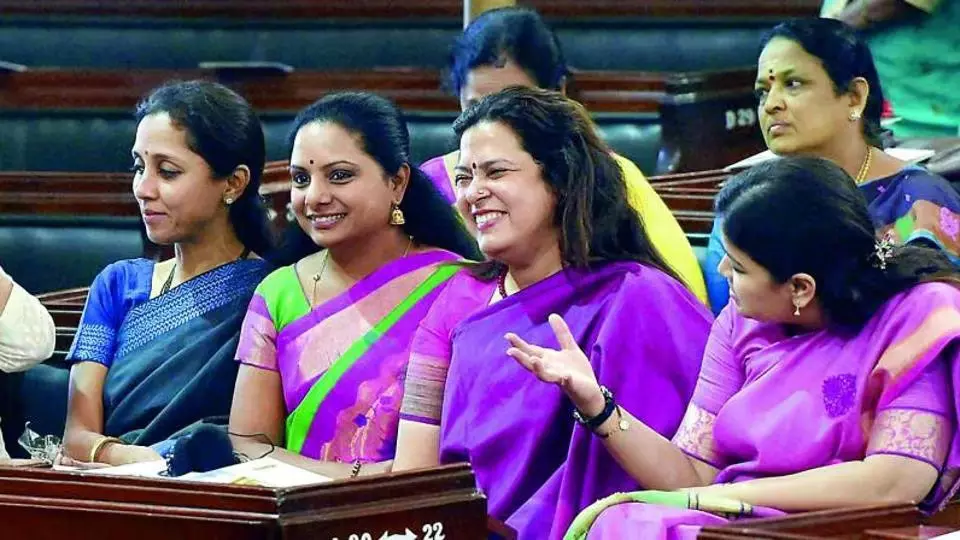
Women in Parliament: Top 10 countries that are leading the way
Top 10 countries that are setting an example for the rest of the world with higher representation of women in their legislative bodies

In a landmark move towards gender equality in Indian politics, the Union Cabinet on Monday (September 18) approved the Constitution (One Hundred and Eighth Amendment) Bill, 2008, introducing a 33% reservation for women in the Lok Sabha (House of the People) and state Assemblies. According to the Geneva-based Inter-Parliamentary Union (IPU), a global organisation comprising national parliaments, the world is currently not on course to attain gender equality in politics by the target year of 2030.
However, there has been continuous progress on this front as women continue to make steady inroads into governmental leadership positions across the globe. An increasing number of women are securing seats in national parliaments, and several countries have introduced parliamentary quotas to promote fair and equitable representation of women in their legislative bodies.
Currently, India stands at the 148th position in the world in terms of giving women representation in its national legislature, in the company of Hungary (12.6%) and the Oceanian island of Palau (6.3%). With 20 % representation in each house of the Parliament, Pakistan is at the 100th place while China is at the 72nd (24.94 %). While Canada is ranked at 60 (29.6% lower house, 46.7% upper house), the US ranks 78 (23.6% in the lower house, 25.0% in the upper house). With 35% reservation for women in the Parliament, the UK figures on the 39th position.
The Federal takes a look at the top 10 countries that are setting an example for the rest of the world and working towards a future where women have equal voices in shaping their nations’ destinies:
1. Rwanda: The East African country, which became the first country to have a female-majority parliament in 2008, is leading the world with 61% of its parliamentary seats occupied by women. Hailed for its remarkable progress in promoting gender equality in politics, Rwanda serves as an inspiration for countries worldwide. With 46 percent of parliamentary seats occupied by women, Senegal figures on the second position in the African continent. South Africa, Namibia, and Mozambique have above 40 percent reservation for women. Nigeria has only 3.9 percent of women holding seats in the country’s House of Representatives.
2. Cuba: Cuba figures on the second position, with over 53% of women in parliamentary seats. The Caribbean nation is one of the region’s two representatives in the top 10, alongside Grenada. After the elections in April this year, 53.2 per cent of new MPs in the national Assembly are women. It has been lauded by the IPU for achieving and sustaining gender parity in politics.
3. Nicaragua: In 2017, 45.7 percent of parliamentary seats in the Latin American nation were held by women, which was the highest rate in all middle-American countries then. Women have played a vital role in resisting the country’s dictatorship. As of August 2022, 51.7 percent of the MPs were female.
4. United Arab Emirates: The United Arab Emirates (UAE) has witnessed a remarkable transformation, leaping from 85th in the world to third place in terms of gender equality in parliament. President Sheikh Khalifa’s call for women to occupy half of the parliamentary seats in 2018 led to this impressive improvement, with 50% of parliamentarians now being women.
5. New Zealand: New Zealand’s Parliament, led by Prime Minister Jacinda Ardern, boasts diversity with more women, people of colour, and LGBTQ+ members. Ardern, the world’s youngest female leader when elected in 2017, continues to champion women’s leadership. In October 2022, it achieved a gender milestone when women came to outnumber men in the parliament; its legislature body includes 60 women and 59 men. Interestingly, New Zealand became the first country to allow women to vote in parliamentary elections in 1893.
6. Mexico: In 2018, Mexico was declared the “Year of the Woman,” and since then, the country has maintained over 48% women parliamentarians, achieving gender parity after more than 3,000 women ran in that year’s elections.
7. Grenada: Grenada has taken legislative action since 2006 to ensure gender equality across the nation, particularly focusing on eradicating poverty among women. In 2013, the country swore in its first female head of state, Governor-General Cécile La Grenade. As of February 2021, 46.7% of seats in parliament were held by women.
8. Andorra: Andorra exhibits high representation of both women and young people in Parliament. While the country has work to do in advancing women’s rights, the percentage of women in parliament has risen from 32% in 2019 to 46.4%.
9. Bolivia: Bolivia achieved gender parity in Parliament, thanks to a quota law implemented in 2010, which raised the existing quota from 30% to 50%. The South American nation, one of the few countries in the world where roughly 50% of lawmakers at every level of government are women, has 46.2% women in Parliament.
10. Sweden: Sweden proudly claims to be the world’s first feminist government, with gender equality deeply ingrained in its values and decision-making processes. Currently, 46% of Sweden’s Parliament consists of women.

